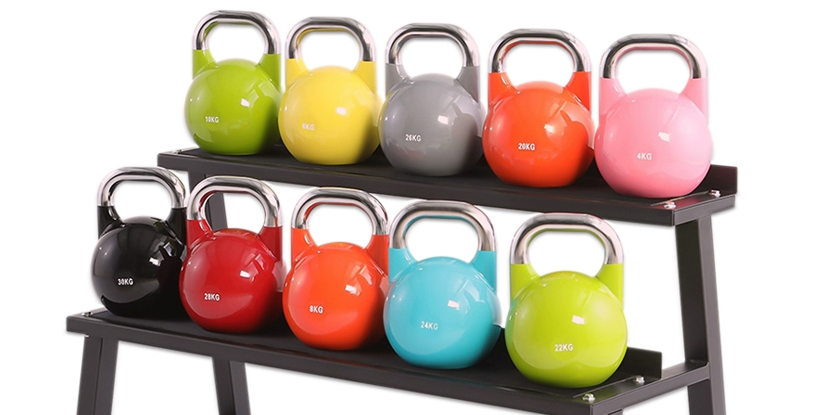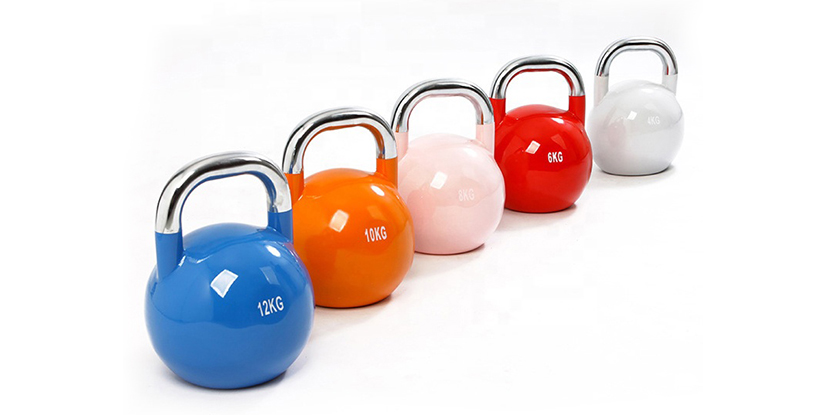Kettlebell weight progression? I used to think it just meant leveling up when the bell felt too light. Simple, right?
Well—not exactly.
Like a lot of people, I started out with one kettlebell. I trained with it, got used to the movement, and assumed the next step was just… more weight. But once I got deeper into training (and started coaching others in a gym setting), I realized there’s way more to it.
Turns out, progressing kettlebell weight the right way isn’t just about going heavier. It’s about knowing when to level up, how much to increase, and why it matters—especially if you want to keep clients safe, avoid plateaus, and build real results.
Let me break it down the way I wish someone had for me.
What Kettlebell Weight Progression Actually Means
Kettlebell weight progression is all about knowing how and when to move up in weight—without wrecking your form or slowing your gains.
At first, I thought it just meant grabbing the next heaviest bell and hoping for the best. But there’s a bit more to it, especially in a structured gym setting where consistency and safety matter.
Here’s what I’ve learned:
- Master the basics first
You’ve gotta nail your form—swings, cleans, snatches, presses—before thinking about heavier bells. If the technique isn’t clean, more weight won’t help. - Understand how weight jumps work
Kettlebells don’t mess around — they usually jump in big chunks, like 4kg (roughly 9 pounds). And yeah, that might not sound wild, but trust me, it hits different. Especially when you’re coaching a mixed-level class — suddenly that jump feels massive. You can’t just “wing it” with progression. - Test new weights, don’t commit too fast
Try the next bell during warm-ups or controlled sets. If your timing, control, or breathing falls apart—back off. Progression should feel challenging, not chaotic. - Listen to your body (and your ego)
This one’s big. Just ‘cause you wanna go heavier doesn’t automatically mean your body’s ready for it. I’ve seen plenty of solid athletes mess up their flow ‘cause they jumped the gun way too soon. - Progress gradually, not randomly
Whether it’s adding volume (more reps), frequency (more sessions), or load (heavier weight), keep it controlled. Smart programming beats random jumps every time—especially in a commercial setting where client safety and performance are on the line.

How I Knew I Was Ready And What Happens If You’re Not
One of the early questions I had was when I was actually ready to add weight. I wasn’t about to wreck my form—or worse, risk getting hurt in front of clients or during group sessions.
Eventually, I figured out a few signs that told me I was good to level up:
- My form stayed clean, even when I was tired.
- I could hit full sets without slowing down or grinding.
- The weight didn’t feel intimidating anymore—it felt controlled.
- And this one’s my go-to rule now:
If I can do 3 sets of 10 smooth reps without wobble, it’s time to test the next bell.
But let me be real—I’ve also gotten it wrong.
There were a couple times I went up too soon, and the signs were obvious after the fact:
- Form broke down halfway through the set.
- I couldn’t control the bell on the way down—which is just asking for trouble.
- My shoulders and low back were talking (more like screaming) the next day.
So now, if I’m unsure, I don’t guess.
Instead, I pause, maybe regress, or just build a few more reps with the current bell. Because rushing it? Not worth it.
And yeah—I learned that the hard way.
At one point, I was so set on hitting a heavier snatch that I pushed too fast. I almost tweaked my back. That was my wake-up call. Since then, here’s what I stick to:
- Don’t chase PRs every week, don’t load up if your form’s even a bit sketchy, and seriously—slow and steady wins when it comes to building real strength without wrecking yourself.
So now when I program weight jumps for gym clients or group sessions, I’m way more cautious. It keeps everyone safer, and honestly? They make better gains, too.
Picking the Right Weight And What to Do Next
When I first started, I had no clue what weight to grab. I just knew I didn’t want to go too light and waste time—or too heavy and wreck my form.
So here’s what I go by now when I coach new members or onboard trainers:
First: Start Smart Based on Your Goal
- For beginners in a gym setting:
- Men: 12kg to 16kg
- Women: 8kg to 12kg
These ranges usually feel challenging but doable for most people.
- For cardio or weight loss goals:
Focus on volume and movement quality first.
It’s not about the heaviest bell — it’s about being able to move well for longer. - For strength or muscle gains:
Go heavier, but only when your technique is dialed in.
Clean reps > big numbers, always.
Basically, match the weight to what you’re actually trying to do—not just what looks impressive.
Then: How Much Weight to Add?
This was where I messed up early on.
I once jumped from 16kg to 24kg thinking it’d be fine. Spoiler: it was not fine.
Here’s what I recommend now:
- 4kg jumps (that’s about 8.8 lbs) are the sweet spot.
Manageable, noticeable, but not a huge leap. - 6kg or more? That can work sometimes, but depends on the lift.
Swings? Maybe. Presses or snatches? Probably not.
And honestly, if I’m not 100% sure someone’s ready, I’ll just have them test the heavier bell on one move first — no need to go all in right away. Usually swings or goblet squats. That way, there’s less risk, but still a good challenge.
One Bell or Two? Here’s Where I Screwed Up
At one point, I had a solid 16kg bell. I was torn:
Do I buy another 16kg for doubles, or jump to 24kg for heavier single-bell work?
I read every Reddit thread on it.
And here’s my honest take now:
- If your single-bell work feels easy and snappy, go heavier.
- If you’re ready to start doubles, grab another of the same size.
- I went with the heavier bell. It was a grind at first, but worth it long term.
So when we order for a gym now, we plan ahead:
We stock sizes that let people progress logically, in pairs and singles.
Because when someone’s ready to level up, the bell should be there waiting.
Why Progression Actually Matters Long-Term
Here’s the deal — if you’re not progressing, you’re just spinning your wheels.
I didn’t really get this at first. I thought just doing “more workouts” was enough.
But over time, I started to feel stuck. No real changes. No challenge. Just… stale.
That’s when progression clicked for me. And now, I see it clearly:
- Your body needs a reason to adapt.
If the weight never changes, why would your strength? - It helps avoid plateaus.
Progression keeps things moving — physically and mentally. - You stay motivated.
Few things feel better than leveling up to the next bell and owning it. - It helps gym programming.
In a group setting, it makes it way easier to scale workouts for all levels.
So yeah, it’s not just about getting “stronger.”
It’s about staying challenged, engaged, and confident — session after session.
And if you’re running a gym or coaching others, trust me:
Having the right bell sizes on hand for smart, safe progression?
That’s a game-changer.
Progress won’t always be linear — and that’s fine. Just train smart, trust the process, and the weight jumps will come.

Hi, I’m the editor here at Leadman Fitness. We’re a manufacturer focused on producing top-quality barbells, plates, kettlebells, dumbbells, and strength training gear. I’ve been into sports and fitness for years, and I know my way around all kinds of gym equipment—both from using it and helping create it.
I spend a lot of time understanding the real problems people run into in the gym—whether it’s beginners trying to pick the right gear or experienced lifters looking for something more durable. I stay in close touch with our production team and talk directly with other equipment makers, so we’re always improving based on what real lifters and coaches are looking for.
What I share comes from hands-on experience—stuff that actually helps people train better, not just in theory, but in real gyms.
